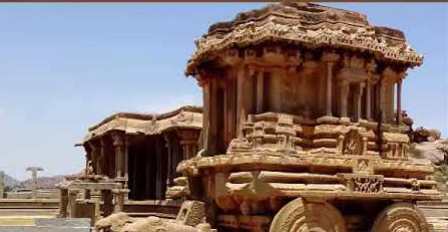The Rajputs and Traditions of Heroism












The Rajputs and Traditions of Heroism
The Rajputs and Traditions of Heroism
Rajasthan was called Rajputana by the British. This was an area that was inhabited only or mainly by Rajputs. This is only partly true. There were several groups who identify themselves as Rajputs in many areas of northern and central India. However, the Rajputs are often recognized as contributing to the distinctive culture of Rajasthan. These cultural traditions were closely linked with the ideals and aspirations of rulers. Rajasthan was ruled by various Rajputs Families. Prithviraj was one such ruler.
These rulers cherished the ideal of the hero who fought valiantly, often choosing death on the battlefield rather than face defeat:
Paintings: India had a fine tradition in the art of painting. The exquisite, beautifully colored paintings at Ajanta and Ellora were created between 600 and 1000ce. The paintings and sculptures are devoted to Buddhism, Hinduism and Jainism. Most of the painting tell ancient tales of courtly life, and depict Buddhist stories from the Jataka Tales.
During the period of the Delhi sultans, the art of painting declined asd the rulers obeyed the teaching of the Quran, which discouraged the reproduction of the human form through sculpture and paintings. The rule of the Mughals saw the revival of the best in panting. Humayan brought to famous Persian painters with him Mir Sayyid Ali and Abdus Samad. They introduced the art of miniature painting to India. Miniature painting is small, but highly detailed, painting.
The rule of the Mughal saw the revival of the best in paintings, and it marked an important stage in the growth of this art .Humayun brought two famous Persian painters with him, Mir Sayyid Ali and Abdus Samad .They introduced the art of miniature painting to India .Miniature paintings are small ,but highly detailed paintings.
Akbar brought Persian and Indian artists together, and a new style of painting was born-the Indo-Persian School of painting. Jahangir was deeply interested in painting.
Students / Parents Reviews [10]
I have spent a wonderful time in Abhyas academy. It has made my reasoning more apt, English more stronger and Maths an interesting subject for me. It has given me a habbit of self studying

Yatharthi Sharma
10thBeing a parent, I saw my daughter improvement in her studies by seeing a good result in all day to day compititive exam TMO, NSO, IEO etc and as well as studies. I have got a fruitful result from my daughter.

Prisha Gupta
8thOne of the best institutes to develope a child interest in studies.Provides SST and English knowledge also unlike other institutes. Teachers are co operative and friendly online tests andPPT develope practical knowledge also.

Aman Kumar Shrivastava
10thA marvelous experience with Abhyas. I am glad to share that my ward has achieved more than enough at the Ambala ABHYAS centre. Years have passed on and more and more he has gained. May the centre flourish and develop day by day by the grace of God.

Archit Segal
7thIt was good as the experience because as we had come here we had been improved in a such envirnment created here.Extra is taught which is beneficial for future.

Eshan Arora
8thIt has a great methodology. Students here can get analysis to their test quickly.We can learn easily through PPTs and the testing methods are good. We know that where we have to practice

Barkha Arora
10thAbout Abhyas metholodology the teachers are very nice and hardworking toward students.The Centre Head Mrs Anu Sethi is also a brilliant teacher.Abhyas has taught me how to overcome problems and has always taken my doubts and suppoeted me.

Shreya Shrivastava
8thMy experience was very good with Abhyas academy. I am studying here from 6th class and I am satisfied by its results in my life. I improved a lot here ahead of school syllabus.

Ayan Ghosh
8thMy experience with Abhyas is very good. I have learnt many things here like vedic maths and reasoning also. Teachers here first take our doubts and then there are assignments to verify our weak points.

Shivam Rana
7thAbhyas is a complete education Institute. Here extreme care is taken by teacher with the help of regular exam. Extra classes also conducted by the institute, if the student is weak.
